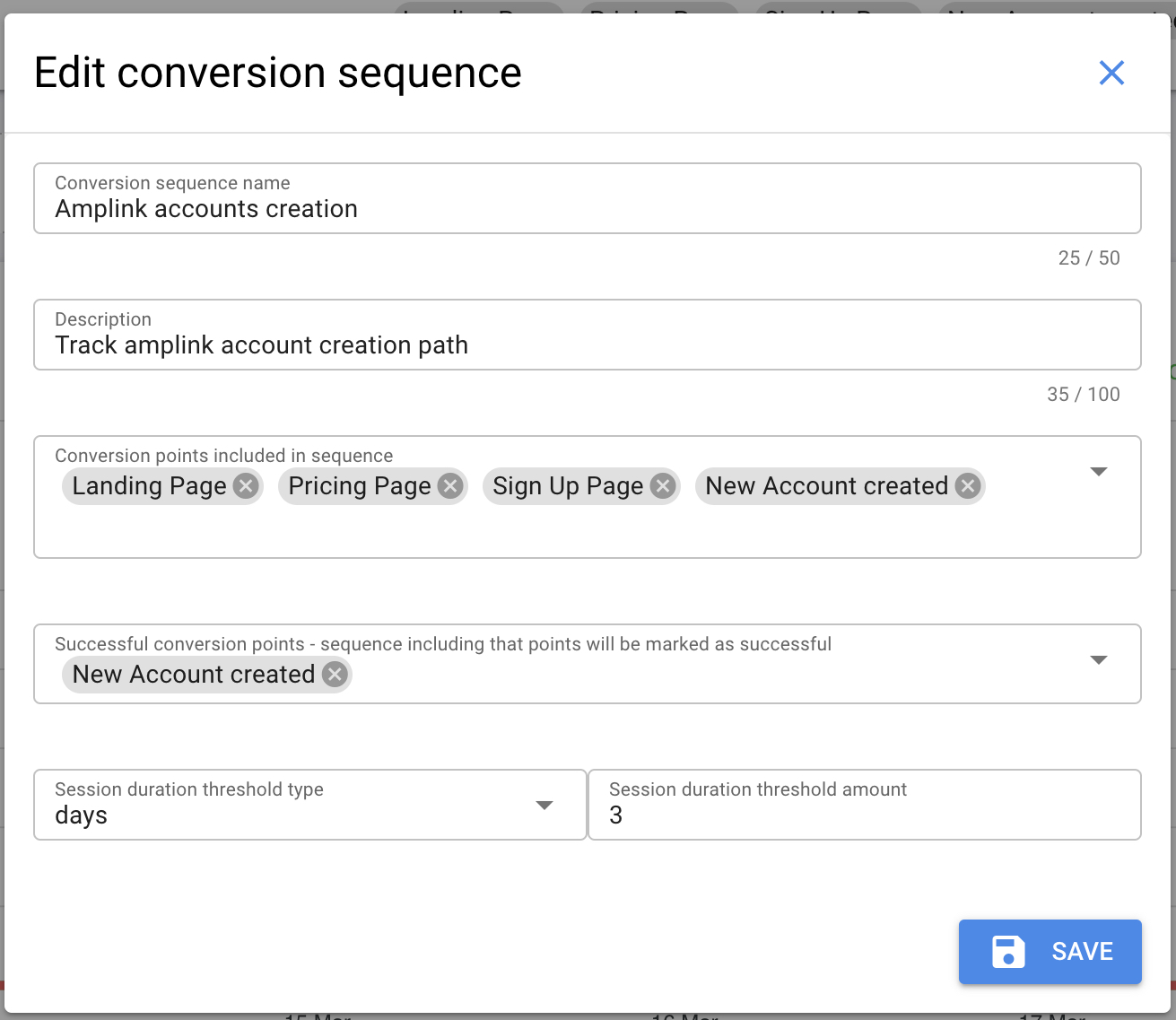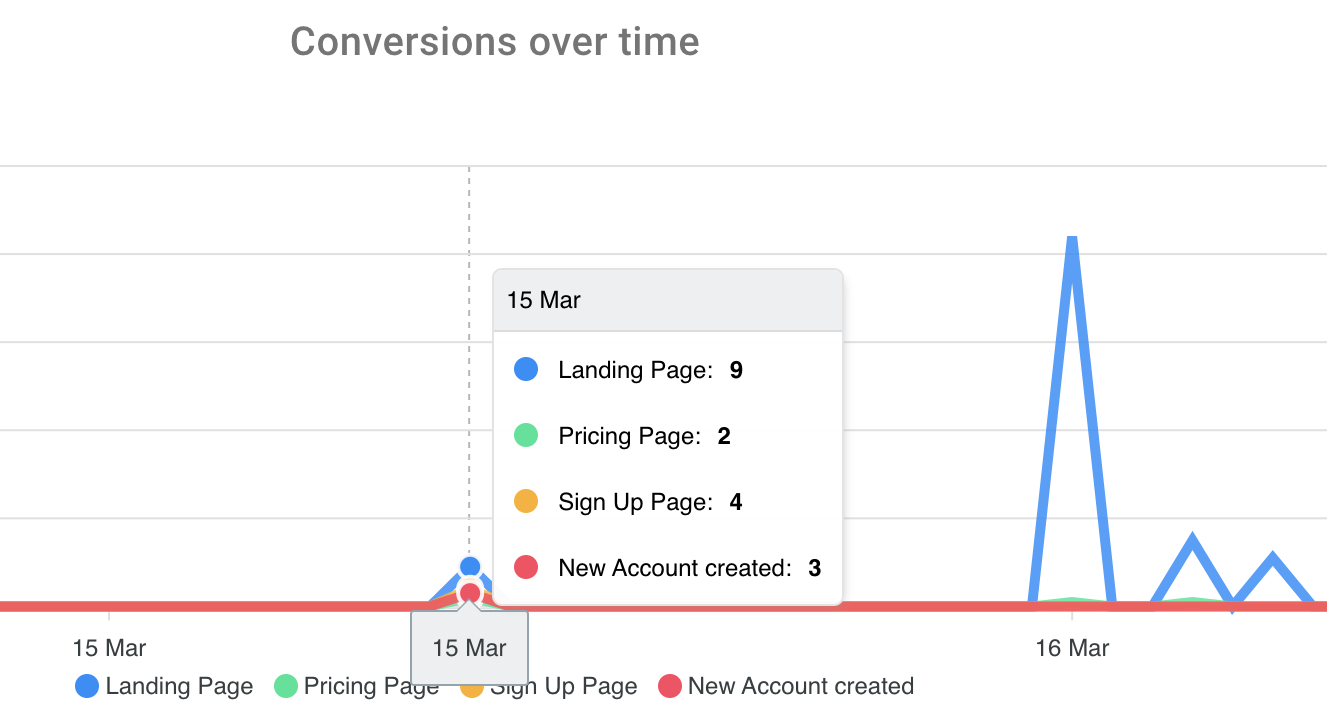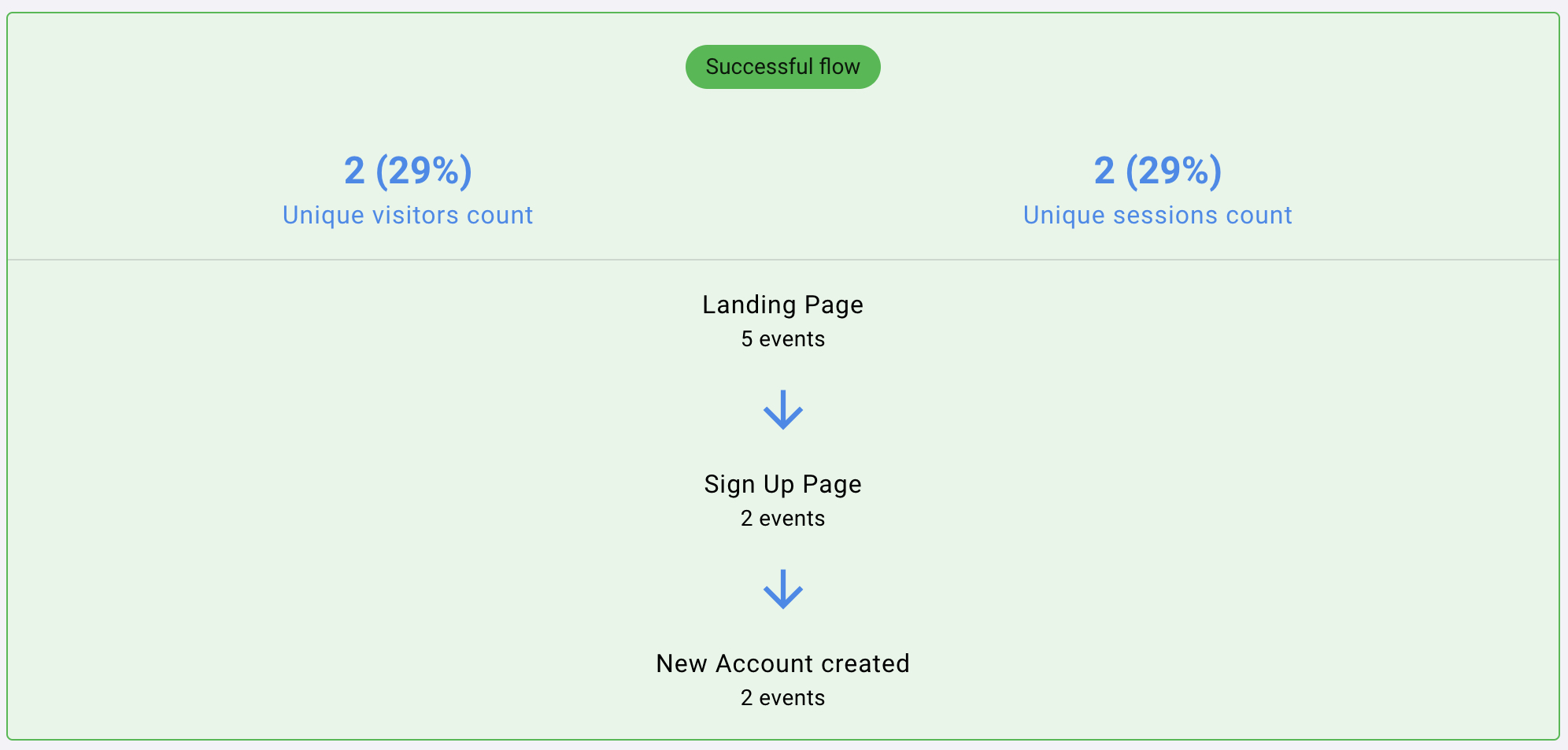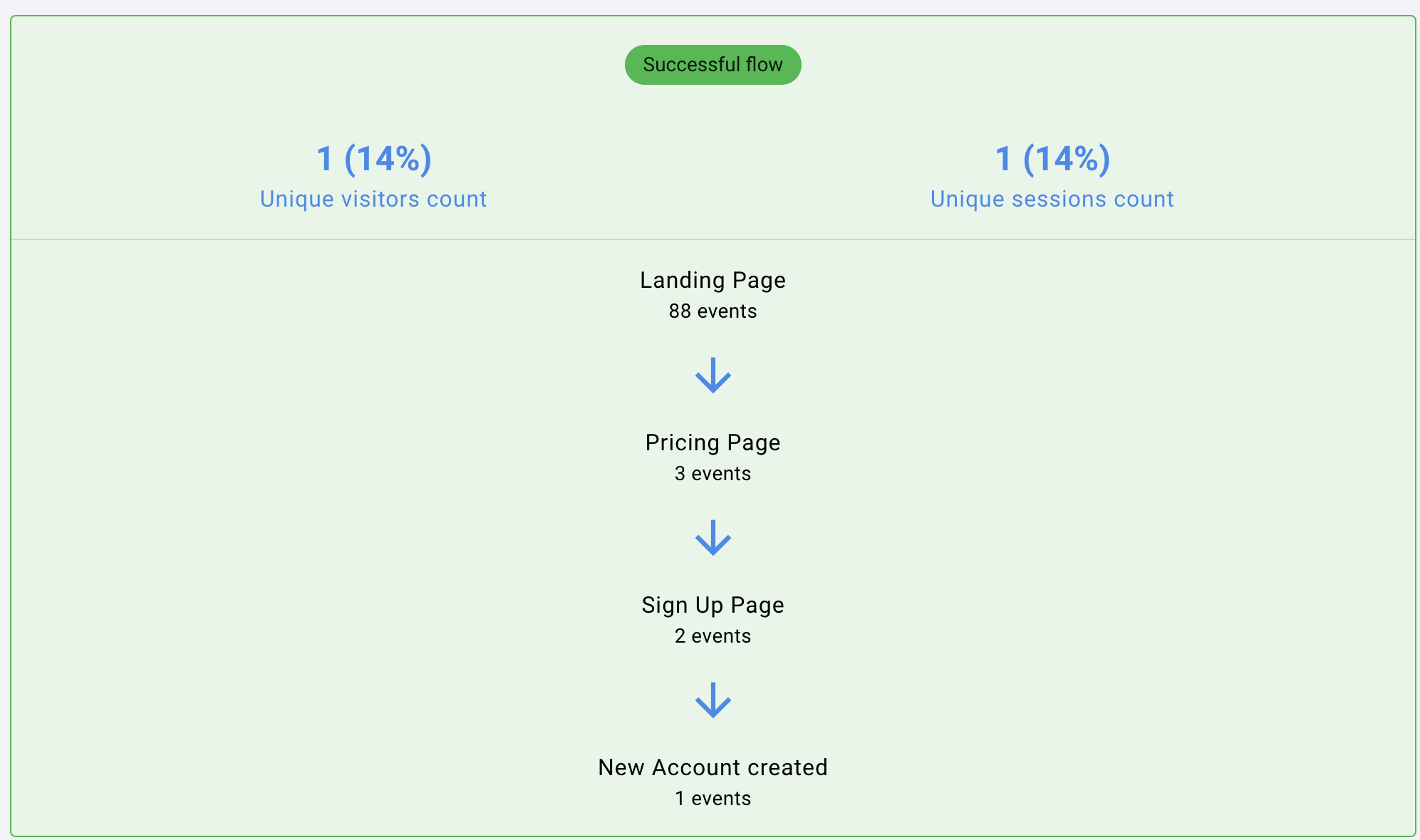Conversion sequences
Introduction

The conversion sequences allows you to see what path your visitors have taken. The generating path is based on the indicated conversion points. You can see different combinations taking into account unique visitors. Additionally, you can see what paths lead your visitors to a positive conversion.
Real life example
Let's assume that we want to trace the path that visitors take from the moment they land on your website to the moment they create an account.
Requirements
Let's define 4 conversion points:
- Landing Page - registered when someone visit landing page
- Pricing Page - registered when someone visit pricing page
- Sign Up Page - registered when someone visit registration page
- New account created - registered when someone created account in your application
Conversion sequence definition
Now go to conversion sequences list and add conversion sesquence as at screen below.

Fields explanation
Conversion points included in sequence - conversion entries of that points will be used to calculate all possible flows combinations
Successful conversion points - conversion flows including that points will be marked as positive conversion
Session threshold - Unique user conversion entries with a time difference below this setting will be treated as one session
Results explained
Summary Card
Let's discuss the results obtained. The first section provides a summary for the generated data.

Option descriptions:
- Total flow sequences - number of total tracked combinations. We have 4 unique events combinations tracked
- Unique visitors count - number of unique visitors tracked with specified events. We have 7 unique visitors tracked.
- Unique sessions count - number of unique sessions tracked with specified events. We have 7 unique sessions tracked. Events tracked for unique visitor are divided into different sessions if delay between events are grater than specified in sequence definition.
- Successful flow sequences - number of flow sequences ending with positive conversion. Percent of all possible sequences tracked.
- Successful visitors count - number of unique visitors that were tracked in any successful flow sequence. Percent of all unique visitors tracked.
- Successful sessions count - number of unique sessions that were tracked in any successful flow sequence. Percent of all sessions tracked. The visitor may have many sequences but only some of them may be positive.
Events time distribution
Next, we can see the time distribution of all tracked events

Tracked sequences
Our example has 4 different sequences of recorded events. Two of them are sequences with positive conversion. The sequences are sorted descending by the number of occurrences of unique sessions.
Landing Page - The most common sequence. 3 visitors has 3 sessions. All of them only visited landing page. This sequence does not convert successfully. As we can see that 3 users has generated 24 landing page views. These visits did not lead to the creation of an account in the system.

Landing Page -> Sign Up Page -> New account created - First sequence that converted successfully. As we can see in this sequence, we have 2 visitors who went directly from our website to the account creation form and created an account.

Landing Page -> Pricing Page -> Sign Up Page -> New account created - Second sequence that converted successfully. As we can see in this sequence, we have 1 visitor who went from our website to the pricing page and then to account creation form. In the end that visitor created an account.

Landing Page -> Pricing Page - Last sequence without any successful converts. This visitor visited your website, viewed the price list, but did not create an account in the application. He didn't even go to the account adding form.
